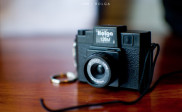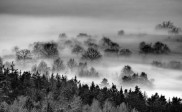Tips for Wonderful Desert Photography
Desert photography
Lighting and exposure are key elements to consider when shooting pictures in the desert. Photographs taken in the desert tend to look very unique and artistic. There are a few challenges in desert photography, but great snaps can be taken by both the professional and amateur photographer. Here a few tips that will prove useful on your trip to the desert.
1. Look out for sun flares
Sometimes sun flares can enhance the mood of the desert and leave the photographer with an amazing photograph. They can also work against you and spoil a lovely shot. You will have to use your sense of judgment to determine whether or not to block out the sun flare. If the sun is too bright and you happen to be shooting in its direction, use something to block it out. The image in your view finder will only show at 95%, so it is best to increase the distance between you and the object.

Photo by Waleed-DP
2. Position yourself according to the sun
Pay attention to the position of the sun and how you stand in relation to its position. Avoid standing with your back toward the sun when it sits on the horizon during the morning and the evenings. Standing with your back towards the sun while it shines directly on the subject of your shot will hide the shadow from your camera, leaving the image flat and without any depth of detail.
3. Position your camera perpendicular to the direction of sunlight
As a rule, you should always do this to ensure that your shot comes out with the best light and shadow detail. A sense of depth is created on objects when light falls on one side and cast a shadow on the other side.
4. Select the right time of day to shoot
The best time to take a shot in the desert is when the sun is behind you or when you can get it over at least one shoulder. One and a half hour after the sun has risen and one and a half hour before the sun sets is the best time to take your shots. Midday during the summer is not a good time to take photographs in the desert. The lighting conditions change with the seasons.
5. Use the right equipment
This is usually the first point that is made when discussing photography techniques, but I’ll mention it here. Use the right equipment. Desert photography is best done with wide angle lens that have a range of between 16 to 35mm. It is also best to use 100mm macro lens or 70 to 200mm telephoto lens. It is advisable to use a long telephoto lens.
6. Use structures to add scale
Include a monolithic structure in your photograph to add scale. This is especially useful if you are shooting a series of dunes.
Additional tips include protecting your camera from the intense heat while in the desert, and using UV filters to protect your lens. A tripod is not necessary, but may prove useful during windy conditions. A tripod may also come in handy if you plan to take some pictures at night.




Thank you for the information. Living in the southwest, and near the desert, tips such as yours helps photographers like me to improve on their methods – and I could surely use some!